Do you love kayaking? Kayaking is a fun and engaging activity that you should definitely try if you haven’t already. While this activity is becoming more popular, many people are questioning the safety of kayaking, especially regarding the environment.
Is kayaking bad for the environment?
Unlike some sports and activities that are done offshore, kayaking is considered safe for the environment. Kayaking does not emit greenhouse gases.
Like every other activity, however, kayaking poses some threats to the environment that we can take measures to reduce or eliminate.
This article delves into what negative effects kayaking has on the environment and how we can keep our environment safe.
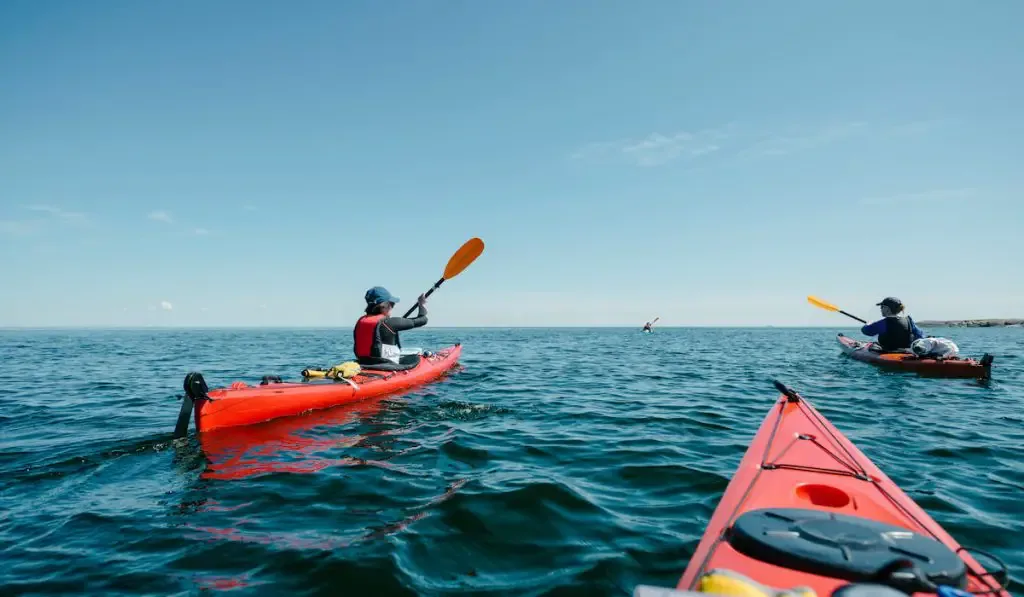
Environmental Effects of Kayaking
Almost everything has its pros and cons. While kayaking is safe for the environment when you consider the use of other boats such as powerboats, you can also cause harm to the environment if you are not careful.
Let’s discuss some ways in which kayaking affects the environment.
Negative Environmental Effects of Kayaking
Here are some threats that kayaking can pose to the aquatic environment:
1. Disturbing of Aquatic Ecosystem
This happens when you are kayaking in a reserved or sensitive spot. Some parts of the river are designated as breeding spots for fish and if you disturb them, you may delay (or prevent) the hatching of their eggs.
Kayakers may also remove obstacles such as the roots and leaves of trees of the dams of beavers. These activities disturb aquatic ecosystems.
When kayaking, you should stick to local guidelines as well as remember that your activities affect nature. Try not to disturb the aquatic ecosystem around you.
2. Kayak Wearing Off into the Water
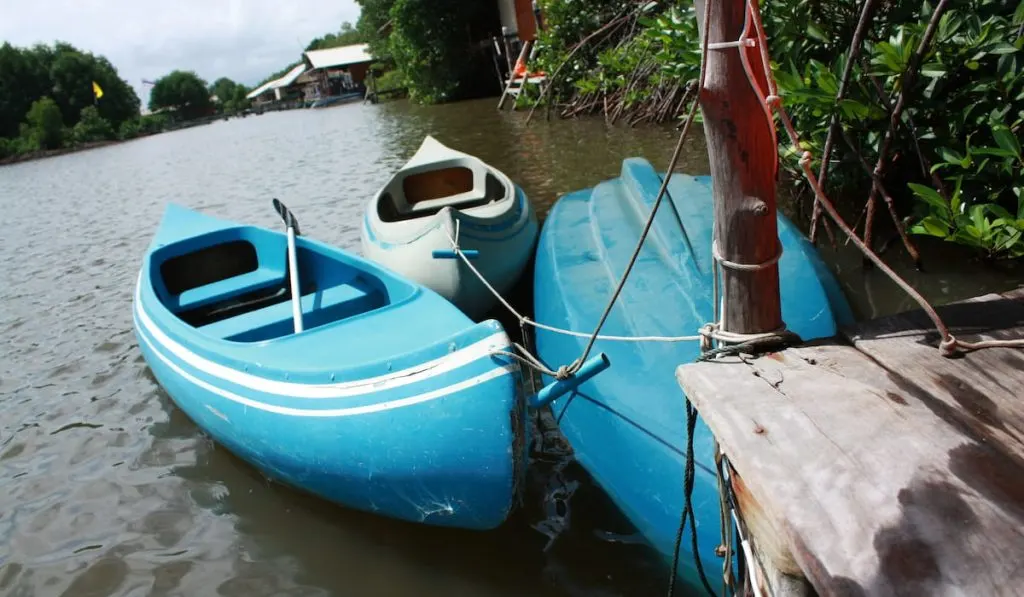
Almost everything has an expiration date. In time, the body of your kayak may start to wear off. Kayaks are usually made of, wood, polyethylene, fiberglass, of thermoplastics.
When the body of your kayak starts wearing off, little pieces of the material (used in making your kayak) will fall off into the water if you continue kayaking.
Microplastics (as well as other toxic materials) pose threats to aquatic life as some fish species might eat them (thinking that they are food). You should not kayaking with an old kayak to keep the aquatic habitat safe.
3. Ghost Fishing
Ghost fishing occurs when you abandon your boat or fishing gear in the sea or river. These fishing gears end up suffocating fish and turtles as they block the way. Ghost fishing is responsible for the death of many fish and turtles.
When you are done fishing or kayaking, you should take your kayak off the water and keep it far from the water to prevent ghost fishing.
As you can see, these negative effects of kayaking on the environment are easily preventable. Let us discuss some positive effects of kayaking on the environment
Positive Environmental Effects of Kayaking
Here are some ways that kayaking positively affects the environment:
1. Zero Gas Emissions
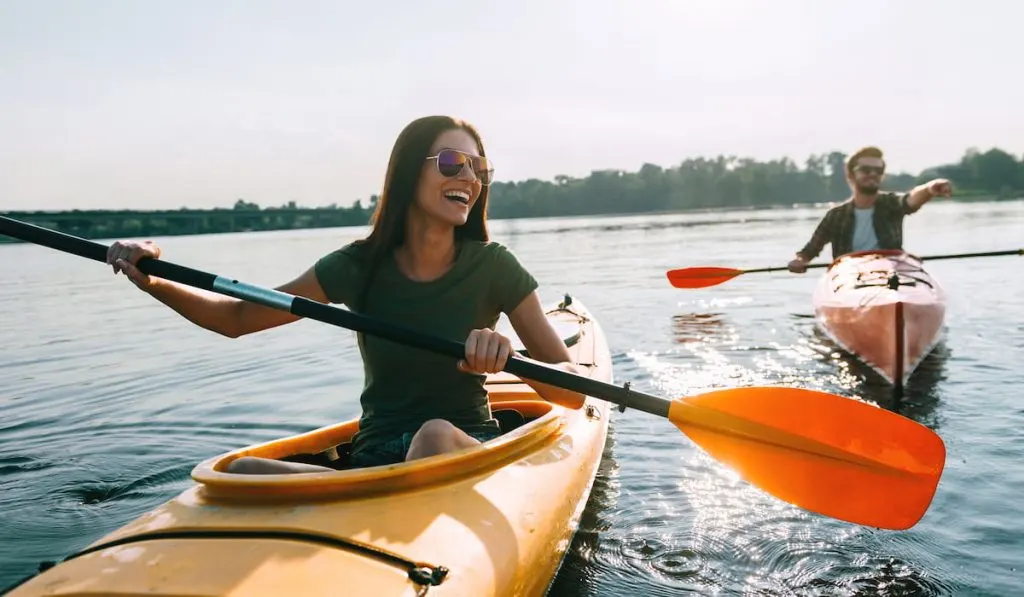
Kayaking does not require fuel. This means that you don’t emit any harmful or toxic gas while kayaking. Kayaking is safer for the environment, unlike ships and powerboats that use fuel in their engines.
Kayakers use their hands to move the kayak, so just like walking and cycling, kayaking does not emit any pollution into the environment.
2. Zero Fuel Leakage or Leaching
Aside from gas emissions, powerboats and ships are known for fuel leakage or leaching. Around 20% of fuel used in powerboat engine combustion leech into the water.
Since fuel is not used while kayaking, kayaking has proven to be safer for the environment.
3. Going Slow Does Not Harm Aquatic Life
Powerboats and ships may harm whales and other large fish near the surface of the water. Since powerboats are very fast, they can cause injuries to the body of fish. Also, the propellers of powerboat engines can displace or even kill fish.

Unless you are kayaking in fast-moving water, kayaking is relatively slow and does not harm aquatic life. Fish can more easily see and swim away from a slow-moving boat than a fast-moving one.
Do you now agree that kayaking is safe for the environment? What are more ways to care for the environment when kayaking? Continue reading.
How to Protect the Environment While Kayaking
Here are useful tips to keep the environment safe while kayaking:
1. Go Kayaking with a Waste Receptacle
It is common for kayakers to eat and drink while kayaking. The question is what happens to their food waste, peels, single-use plastics, etc.?
When going on a kayaking trip, you should have a waste bin or any waste receptacle that can store your trash until you return to the land and dispose of your waste properly.
Do not dispose of your waste into the water. Inorganic waste such as plastic bags can harm fishes that think they are food and eat them. Organic food such as food waste can decay in the water and introduce harmful microbes that can harm fish in the water. Always store your waste and only dispose of properly.
2. Use Waterproof Bags to Store Your Accessories, Fishing Gear, and Bait
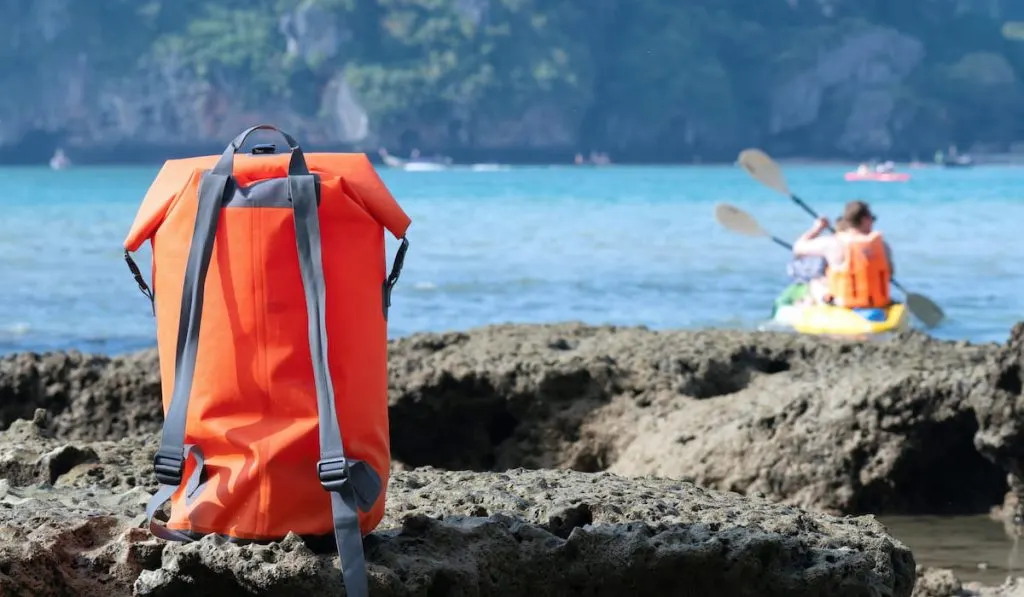
You should store essential fishing gear and bait in a waterproof bag that can float. If your gear falls into the water unprotected, it can get lost in the water. Keeping it in a waterproof bag or container will help it stay afloat until you can get to it.
How is this useful for the environment? Many rivers and seas are home to a lot of lost gear and accessories. The lost items can pollute the environment or even harm fish (ghost fishing).
Preventing your gear and accessories from falling into the water unprotected will prevent this.
3. Avoid Sensitive or Reserved Locations
If your map or guide indicates an area as reserved, you should avoid that area. Also, be very careful when paddling around sensitive areas. You should not disturb aquatic life while kayaking.
4. Do Not Keep Undersized Fish

If you are fishing, you should follow the fishing guidelines. It is generally discouraged to keep undersized fish. Fishing undersized fish can disrupt the population growth of a fish species as members of the young generation will be missing, thus will not become mature enough to reproduce.
Aside from young fishes, you should also release gravid fishes (female fishes with eggs) back into the water so that the population of their species will continue to grow.
5. Do Not Use Old (Worn Out) Kayaks
You should not use old kayaks that can release some of their parts into the water. Asides from the impact of wearing out kayaks on the environment, using worn-out kayaks can be dangerous for you.
Other Ways to Care for the Aquatic Environment
1. Inspect and Clean Your Kayaks between Trips
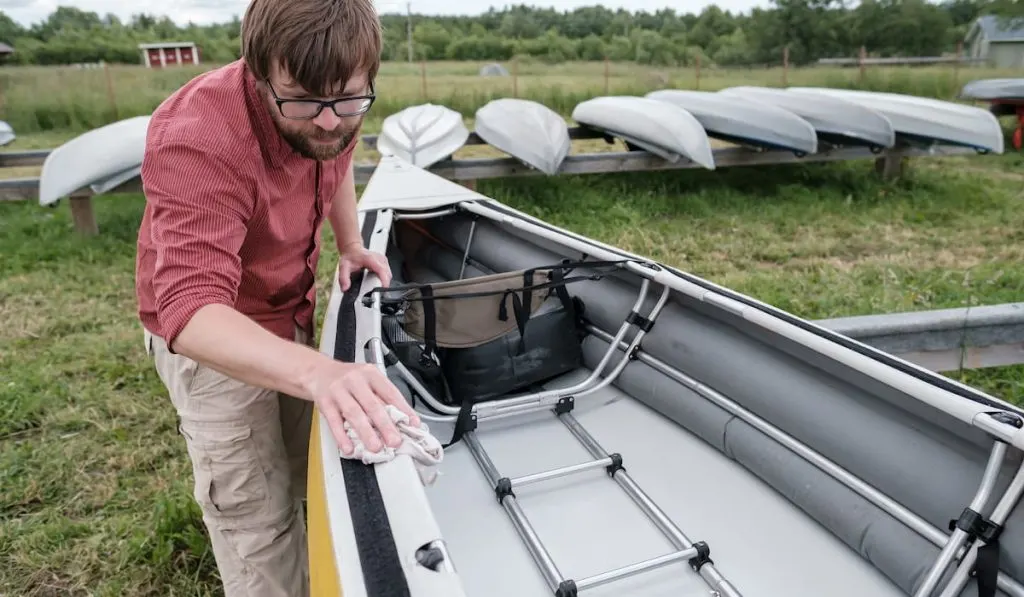
Just like other forms of transportation, there can be hitchhikers in your kayak. Different plants, algae, animals, etc. can follow your kayak back home. Before going on your next trip, you should look for anything attached to your kayak and remove it.
Kayaking can help transport invasive species. To prevent invasive species such as curly pondweed, you should clean your kayak before going on the next trip.
2. Avoid Harsh Cleaning Chemicals
When cleaning your kayak, do not use harsh chemicals that can harm fish and other aquatic wildlife. You can use normal dish soaps or any mild cleaning agent for kayaks found in boating shops.
Remember that toxic chemicals can kill fish and you don’t want that to happen because of you.
3. Do Not Disturb Animals
It does not matter whether you are kayaking or camping, you should not disturb wildlife. Leave insects and other little animals wherever you find them. So long as an animal does not pose a threat to you, do not disturb it.
Also, try not to feed wildlife as their digestive system may not be used to what you are feeding them.
4. When Camping, Dispose of Your Waste Appropriately
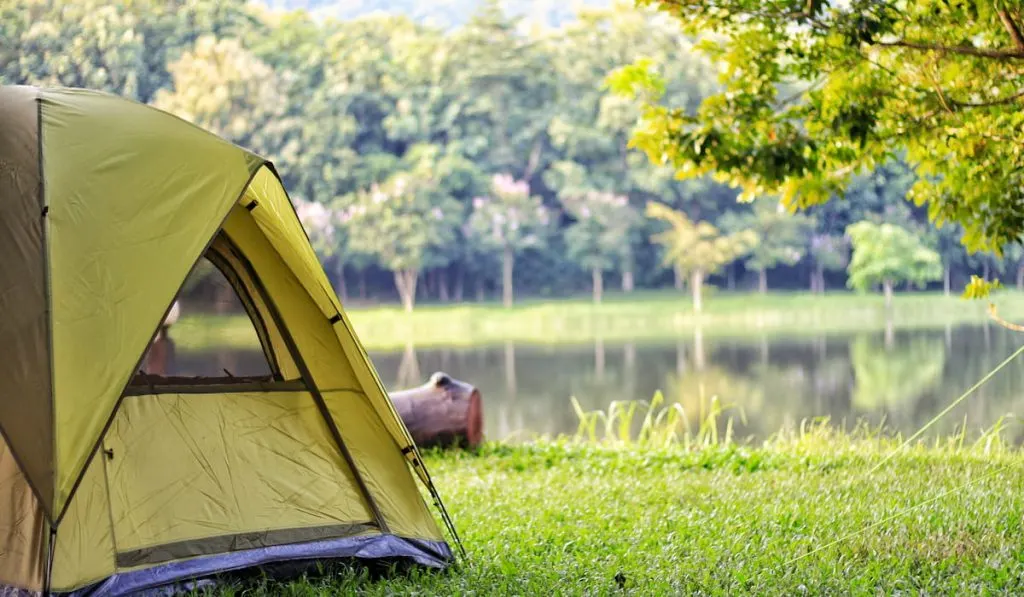
You should not dispose of your waste indiscriminately. Many islands and wetlands are filled with waste disposed of by tourists.
Remember that if you don’t dispose of your waste the right way, other people may not be able to see the beauty of nature as you saw it. Learn to respect nature and only dispose of your waste the right way.
5. Do Not Abandon Your Kayak and Fishing Gear in Water
Remember ghost fishing? To prevent the death and suffocation of fish and other aquatic animals, you should always remove your kayak and fishing gear from the water when you are done kayaking.
Do not abandon any gear, accessory, or kayak on the water. If you must dispose of anything, do so the right way.
Related Questions and Answers
1. Will Animals Attack You When Kayaking?
When you are kayaking, you may come across animals such as alligators, sharks, etc. If you remain calm and alert, no animal will attack you.
Make sure that you do not disturb the animals. Also, stick to local guidelines.
2. Are Kayaks Recyclable?
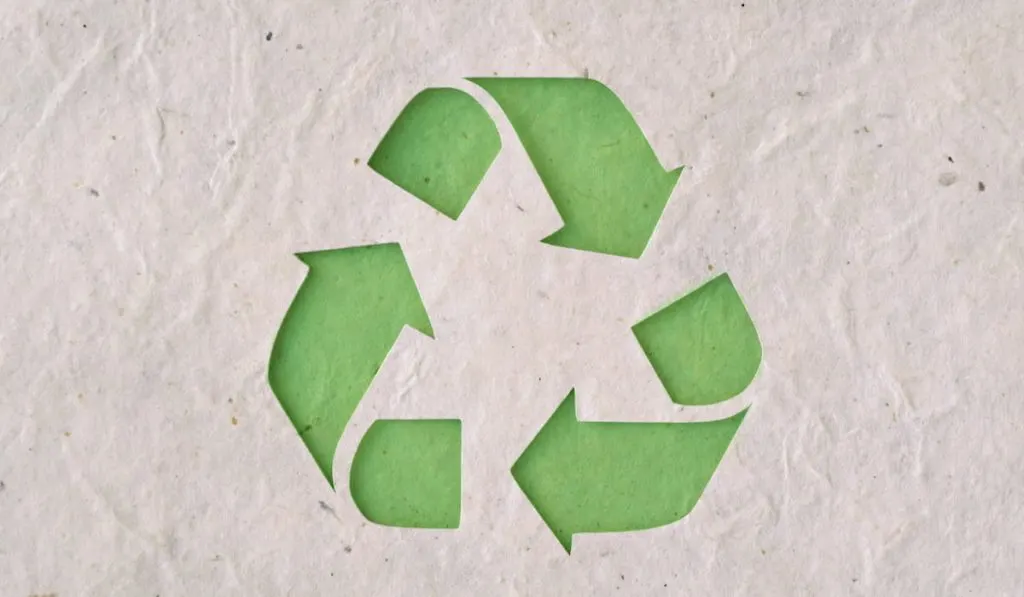
Thermoplastics and some other materials used to make kayaks are recyclable. This means that when disposed of the right way, kayaks pose no threat at all to the environment.
3. Is Kayaking a Healthy Sport?
Kayaking can boost your health as it is a form of exercise. Kayaking helps to build your muscles, but may not necessarily bulk you up. Kayaking is a fun, engaging, and healthy activity.
4. Should You Fish with Kayaks or Canoes?
You can fish with either kayaks and canoes. Both kayaks and canoes have their pros and cons. For example, canoes have more space than kayaks, so they can accommodate more fish and gear. Kayaks, however, have better maneuverability than canoes, so you can use them in fast-moving waters.
Choosing between kayaks and canoes depends on you, your location, and your intention.
5. What Are the Disadvantages of Kayaking?
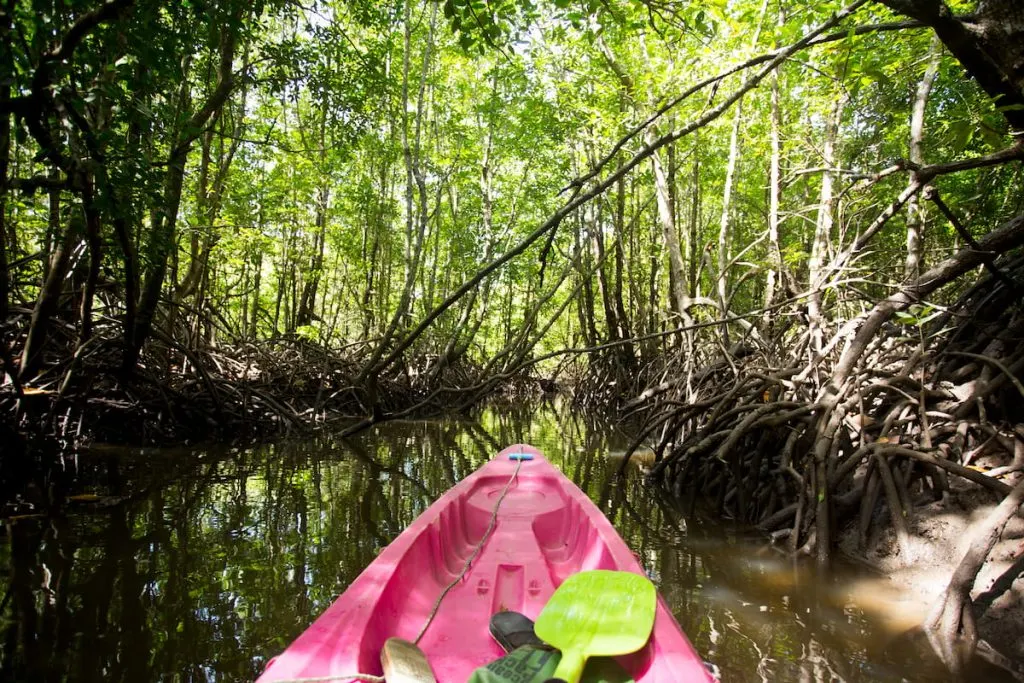
Some risks and disadvantages of kayaking are:
- Hypothermia: If you suddenly fall into very cold water, you can get a cold water shock. Since kayakers usually go to fast-flowing waters, the risk of hypothermia is high in kayaking.
- Getting Lost: Kayakers can get lost if they are not with their GPS or map. Before you embark on a journey to discover new places in your kayak, always make sure that your GPS is working.
- Adverse Weather Conditions: Unlike people in ships, kayakers do not have shelter from rains and storms. The best thing to do when a storm is coming is to look for shelter (under trees away from water). Also, use sunscreen to protect you from the rays of the sun.
- Overstepping Your Boundary: Some inexperienced kayakers can overstep their boundaries by going to rivers that are faster than they can handle. Do not be overconfident when kayaking and only go to places that are safe for you.
- Capsizing: Just like other boats, your kayak can flip over. Always kayak with safety wear, leave the water when a storm is coming, and only go to places that are safe for you.
Make sure that you are safe when kayaking.
Final Thoughts
Even though kayaking has some negative effects on the environment, it is an activity that prevents gas emissions and other toxins from polluting the environment.
The negative effects of kayaking on the environment are easily avoidable, so kayaking is a safe and wholesome activity for you.
